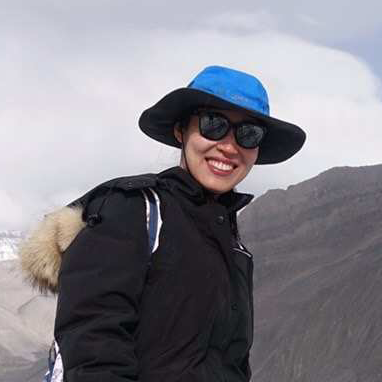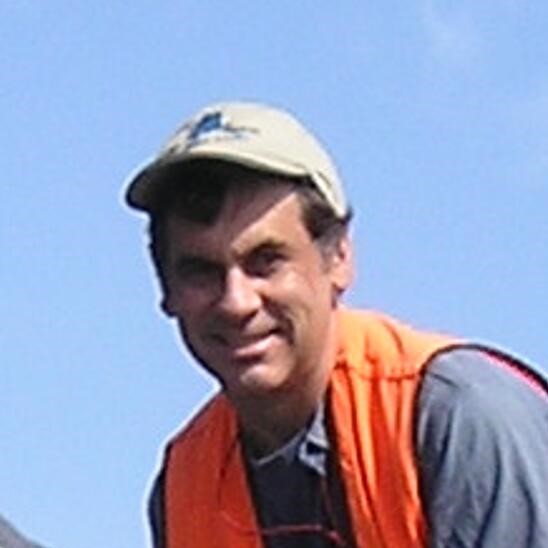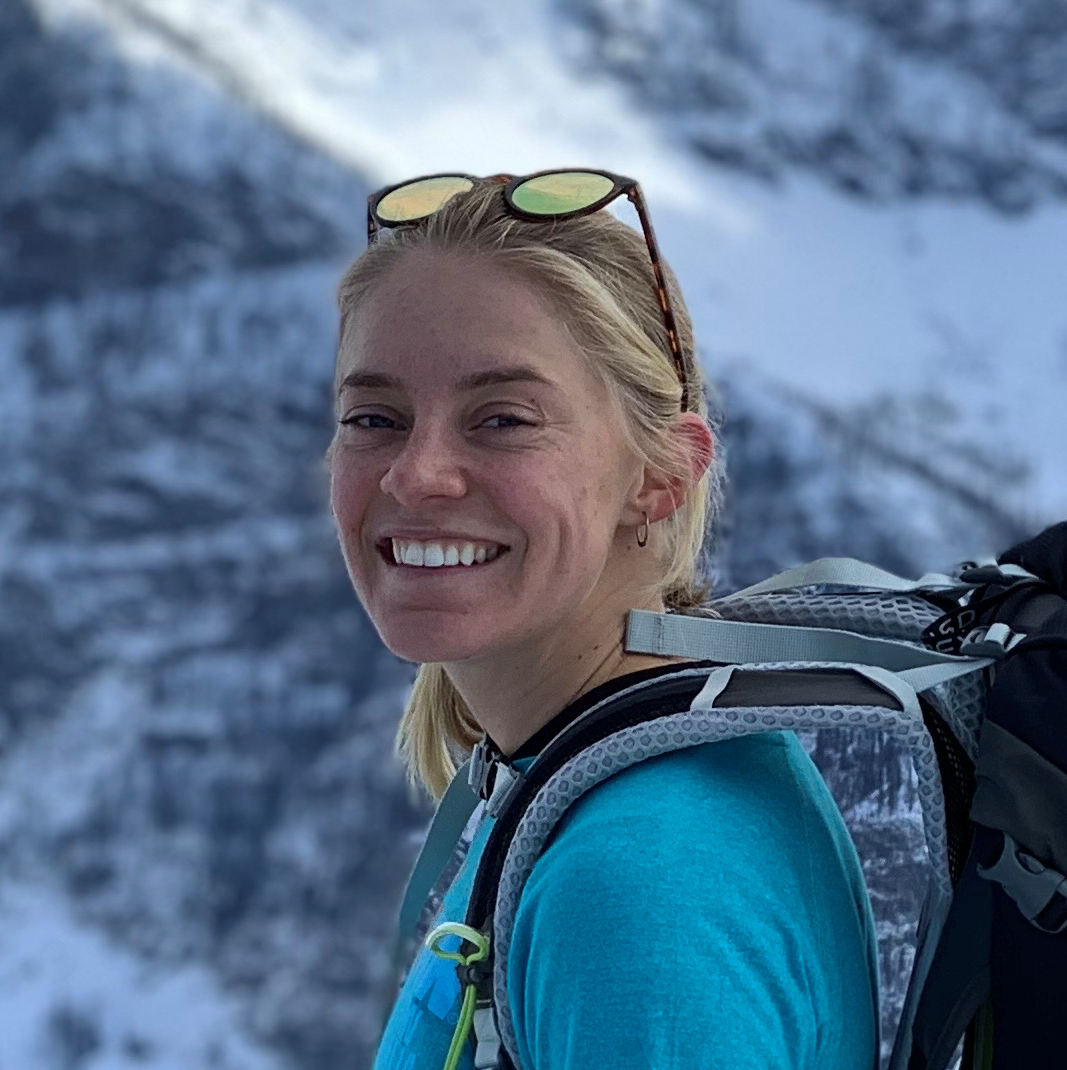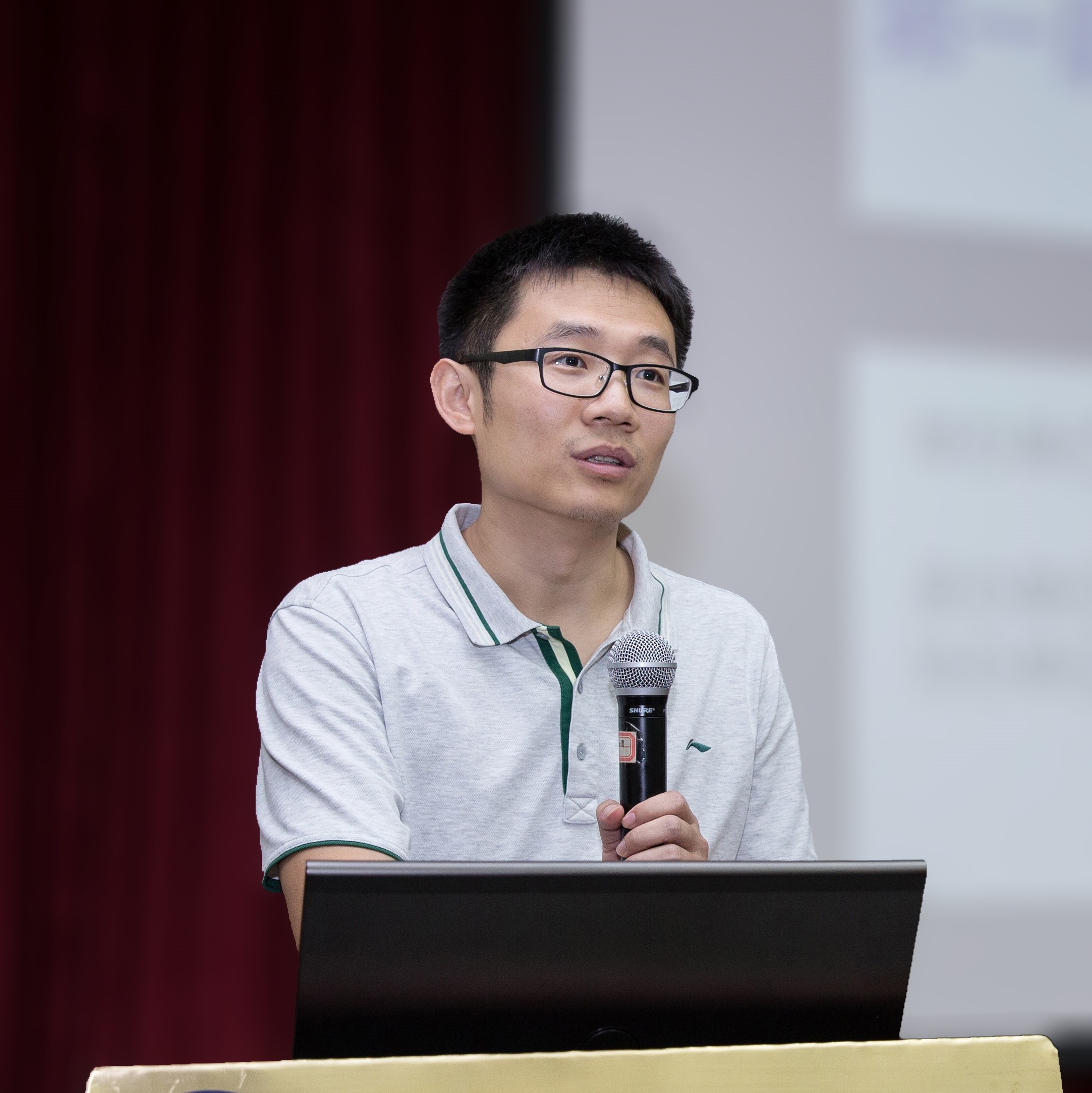Series 4
Series 4, Seminar 1 - Ari Ganbat  Crustal evolution of the Paleoproterozoic Ubendian Belt (SW Tanzania) western margin: A Central African Shield amalgamation tale
Crustal evolution of the Paleoproterozoic Ubendian Belt (SW Tanzania) western margin: A Central African Shield amalgamation tale
Speaker bio
Ariuntsetseg (Ari) Ganbat has just completed her PhD at Tohoku University, Japan, and soon will move to Hong Kong to start a postdoctoral position at the University of Hong Kong. Ari obtained her BSc and MSc (2015) degrees in Earth Sciences at the Mongolian University of Science and Technology. Prior to pursuing her PhD in Japan, she has also worked in Cu–Au mining company in Mongolia.
Ari’s main PhD project focused on the isotopic geochemical evolution of the upper continental crust of different orogenic representatives including the Paleoproterozoic Ubendian Belt of the Central African Shield and Phanerozoic Central Asian Orogenic Belt. During her doctoral course, she also worked on the oceanic plate kinematic and tectonic reconstruction project of the East Asian oceanic plate.
Abstract
The Central African Shield is composed of cratonic fragments including Tanzania, Angola, Kasai, and Mboumou and is flanked by Proterozoic mobile belts. Together with the São Francisco Craton of South America, was once a coherent landmass that stabilized during the Paleoproterozoic orogenies. This shield would remain together during the amalgamation of Rodinia, Gondwana, and Pangea to partially break up with the opening of the Atlantic in the Mesozoic. Due to the limitation of crustal exposure of and being extensively overlayed by Phanerozoic sedimentary units of the Congo basin of Central Africa, the internal evolution history of the Central African Cratons with the mobile belts before the Neoproterozoic consolidation has largely remained unclear. The Ubendian belt is thought to represent the Paleoproterozoic assembly of the cratonic constituents of the Central African Shield at around 1.8 Ga, during the amalgamation of Atlantica within the frame of the Columbia supercontinent cycle. Our study of zircon U–Pb geochronology and whole-rock trace element geochemistry of granitoids revealed that an extensive magmatic flare-up occurred between 1.89 and 1.85 Ga in a slab-failure tectonic setting, and Ediacaran overprints at ∼570 Ma, evidencing a crustal reworking during a Neoproterozoic Pan-African orogeny.
In addition to our analyzed data, we will present the compilation of the igneous and zircon U–Pb and Hf data revealing the internal crustal architecture and the spatial-temporal isotopic evolution of the Central African Cratons with the special highlight on the Tanzania Craton.
Series 4, Seminar 2 - Yuchi Cui  Sedimentary records from Hengchun accretionary prism turbidites on Taiwan Island: Implication on late Neogene migration rate of the luzon subduction system
Sedimentary records from Hengchun accretionary prism turbidites on Taiwan Island: Implication on late Neogene migration rate of the luzon subduction system
Speaker bio
Yuchi Cui is currently doing her joint PhD program at both Curtin University, Australia and Tongji University, China. Yuchi obtained her MSc (2018) and BSc (2014) degrees in Marine Geology Sciences at the Tongji University. Prior to pursuing her MSc degree at Tongji University, she also worked in the China National Petroleum Corporation (CNPC) in China. Yuchi’s main PhD project focuses on the formation and provenance evolution of the South China Sea (SCS) as a typical Western Pacific Marginal Basin. During her doctoral course, she aims to test current hypotheses and establish the most reasonable model for the opening of the SCS by gathering primary data and synthesizing U-Pb geochronological, geochemical, low temperature thermochronological and sedimentary facies results. In her study, both onshore outcrops and offshore drilling samples will be collected from an extensive study region, including the SCS basin and its surrounding areas.
Abstract
Although plate motion models for the Philippine Sea Plate (PSP) are relatively well established, they remain to be confirmed by reliable geological records. Oblique convergence between Eurasia and the PSP has resulted in the uplift of Taiwan Island along the plate boundary. As the latest exposed portion of Taiwan, the Hengchun Peninsula features well-preserved deep-sea turbidites with rounded mafic conglomerate clasts. We apply an integrated source-to-sink analysis and broad field investigations to generate a reliable kinematic reconstruction linking the Hengchun turbidite outcrops with South China Sea (SCS) borehole sediments. Deposited in the lowermost turbidite layer, the Hengchun rounded gabbro and basalt clasts resemble the SCS oceanic crust based on our U–Pb geochronological (~23.6–25.4 Ma) and elemental geochemical results (normal mid-ocean ridge basalts), along with previous magnetic anomaly constraints. The multimodal U–Pb spectra of the matrix-supported sandstones suggest a mixed provenance including central Vietnam, the Pearl River tributaries and potential intrabasinal uplifts, which have not received prior consideration. During the late Miocene, abundant terrigenous sediments from the eastward-flowing “Kontum-Ying-Qiong River” and Pearl River were transported into the submarine environment. The extensive turbidity currents scoured and eroded the SCS mid-ocean ridges, which feature numerous low-angle detachment faults. These materials of various sources were transported eastwards for thousands of kilometers prior to their incorporation into the accretionary prism adjacent to the Manila Trench. From the late Miocene to Pleistocene, the PSP moved northwestward at estimated velocities of ~61–65 mm/yr, facilitating the final uplift and exposure of the accretionary prism.
Series 4, Seminar 3 - Timothy Kusky  Vestiges of early Earth’s deep subduction recorded in Archean ophiolitic podiform chromitites
Vestiges of early Earth’s deep subduction recorded in Archean ophiolitic podiform chromitites
Speaker bio
Timothy Kusky is a Distinguished Professor, and the Director of the Center for Global Tectonics, at China University of Geosciences, Wuhan. He received his BSc and MSc in geological sciences from the University at Albany, and PhD from Johns Hopkins University. He is a Fellow of the Geological Society of America, and a Chinese Friendship Medal Laureate.
Prof. Kusky’s research and teaching focuses on the fields of plate tectonics and the early history of the Earth, as well as in natural hazards and disasters, satellite imagery, mineral and water resources, and relationships between people and the natural environment. He has worked extensively in North America, Asia, Africa, Europe, the Middle East, and the rims of the Indian and Pacific Oceans. He has authored more than 25 books, 600 research papers, and numerous public interest articles, interviews with the media (newspapers, international, national and local television, radio, and international news magazines), and regularly gives public presentations on science and society. Some specific areas of current interest include:
• Precambrian crustal evolution
• Tectonics of convergent margins
• Natural disasters: hurricanes, earthquakes, volcanoes, tsunami, floods, etc.
• Drought and desertification
• Africa, Madagascar, China
• Middle East geology, water, and tectonics.
Abstract
Ophiolitic podiform chromitites from Phanerozoic orogens have been shown to preserve a wealth of textures and inclusions that, in some way, trace earlier episodes of subduction and crust mantle interactions, including traces of the major elements (CHONSP) needed to sustain a habitable planet. Here, we report the first comprehensive documentation of the textures and inclusions of an Archean (circa 2.55 Ga) podiform chromitite from an orogenic ophiolitic mélange in China, recording an ancient CHONSP cycle, during the start of Earth’s transition from a reducing to an oxidized surface environment during the Great Oxidation Event, providing evidence for a dynamic link of Archean-Paleoproterzoic tectonics, and creation of a habitable planet. The composition of the inclusions indicates profound mixing of crustal and mantle sources in the Archean, and the textures show that they were included in chromite grains that began their growth as spherules that aggregated from immiscible silicate-oxide melts near the mantle transition zone at temperatures above 1900°C, forming host chenmingite at 14 GPa, or about 410 km. The melts then protruded upward in an extensional fore-arc, reacting with host harzburgites, progressively including a wide assortment of previously subducted mineral and rock fragments as xenocrysts and xenoliths in the progressively crystallizing chromite. The inclusions include ultra-high pressure TiO2 (II) stable at 7.5 GPa (or about 270 km) at 1000 °C, plus carbonates, hydrous and nominally anhydrous silicates, oxides, base metals, platinum group minerals, previously unidentified OsIrS, and pure carbon as graphite polymers. As the chromite-bearing melts rose further, they finally crystallized near the crust-mantle boundary of a circa 2.55 billion-year-old fore-arc ophiolite, that was soon, by the dawn of the Paleoproterozoic, involved in an arc/continent collision that emplaced the mantle rocks onto a fragment of older continental crust. This early record of inclusion of previously deeply subducted minerals in an orogenic ophiolitic podiform chromitite shows that plate tectonics and subduction have regulated crust-mantle interactions and the life-sustaining deep CHONSP cycles on Earth at least since the Archean, consistent with numerical models showing C-O-H cycling related to subduction led to a rapid oxygenation of the mantle in the late Archean.
Series 4, Seminar 4 - Suzette Timmerman  Formation and evolution of sub-continental lithospheric mantle below the Slave craton
Formation and evolution of sub-continental lithospheric mantle below the Slave craton
Speaker bio
Suzette Timmerman is a Banting post-doctoral fellow at the University of Alberta, Canada. She received her undergraduate and masters from the Vrije Universiteit, Netherlands and her PhD from the Australian National University, Australia in 2019. Her research focuses on quantifying the geochemical evolution of the mantle to better understand geochemical cycles, deep Earth composition and evolution, and formation of natural resources. She is particularly interested in the formation and evolution of the sub-continental lithospheric mantle and sub-lithospheric mantle, tracing these deep processes through isotopic analyses of diamond samples.
Abstract
In this talk, we will focus on diamonds recovered from the Slave craton and what they tell us about the early formation and evolution of the sub-continental lithospheric mantle (SCLM). When, and to what extent, Earth’s cratons became underpinned by thick lithospheric mantle roots capable of hosting diamonds is one of the most controversial aspects of Archean geology and geodynamics. Alluvial Mesoarchean diamonds, which minimum age can be constrained by U-Pb geochronology of accompanying detrital zircons, can reveal information about the thermal structure of early lithospheric mantle. Here, we will talk about the implications of such diamonds for formation mechanisms of the SCLM, that were recovered from gold-bearing conglomerates in the northern Slave craton, Canada.
Series 4, Seminar 5 - Janne Liebmann  The rise of continents and atmospheric oxygen
The rise of continents and atmospheric oxygen
Speaker bio
Janne Liebmann is a research associate within the School of Earth and Planetary Sciences at Curtin University, Australia. She received her BSc (2014) and MSc (2017) degrees from Freie Universität Berlin, Germany, and her PhD (2020) in isotope geochemistry from Curtin. Following the completion of her PhD, she joined the Timescales of Mineral Systems Group at Curtin and is currently working on creating a continent-wide Pb isotope map in collaboration with Geoscience Australia. Her research uses isotope geochemistry and geochronology to better understand the Precambrian history of our planet, including the evolution of the continental crust and atmospheric oxygenation that set the stage for the development of complex life on Earth.
Abstract
The Archean Proterozoic transition marks a time in Earth history of fundamental geologic, climatic, and biologic upheavals, some of which permanently changed the surface environment of our planet. Among these events is the oxygenation of the atmosphere, the first recorded widespread, potentially global, glaciations, and an increase in subaerially exposed continental area. Unravelling the causes and interplay of these events remain a major scientific challenge.
This talk presents the results of multiple studies using different approaches to investigate a potential link between an increase in freeboard (the average elevation of continental crust above sea level) and atmospheric oxygenation at the Archean Proterozoic transition. Specifically, we present an evaluation of the emplacement environment (subaerial vs. subaqueous) of Precambrian continental large igneous provinces, in combination with newly generated and existing geochemical data (oxygen, sulfur, strontium) of Precambrian sediments and igneous rocks that track atmospheric oxygen level, crustal recycling, and freeboard.
Series 4, Seminar 6 - Raiza Quintero  Shocked rocks: the terrestrial impact record
Shocked rocks: the terrestrial impact record
Speaker bio
Raiza Quintero is a Puerto Rican geologist, who is currently undertaking a PhD at the Space Science Technology Centre, School of Earth and planetary Science, Curtin University. Her project consists of searching for mineral deformation and geochemical signatures unique to meteorite impact structures, and more broadly assessing the economic potential of several Australian impact structures. Prior to landing in Perth, she worked at BP-America for over 7 years as a Petroleum Systems Geologist. Raiza holds an MS in Geology from the University of Wisconsin – Madison, where she used SIMS and laser fluorination analysis of Oxygen isotopes in Zircon and Garnet to understand peraluminous magma genesis. She also holds a BSc in Geology from the University of Puerto Rico – Mayaguez, where she worked identifying shocked zircon in Vaal River sediments (Vredefort impact crater drainage system).
Raiza is passionate about geoscience outreach and engagement, and forms part various geoscience and outreach committees at the university and state levels. She also participates regularly in STEM for girls outreach events around Perth; such as Women in Tech WA Techtrails, The Innovators TP inspire in 5, amongst others.
Abstract
Impact cratering is a fundamental planetary process and one of the most dynamic known geological processes. Given the extreme pressure and temperature conditions generated by hypervelocity impacts, planetary bodies can be profoundly modified as a result of these. On Earth, the study of meteorite impact craters adds to our understanding of early Earth history, mass extinctions, and large mineral deposits [1]. Impact structures on Earth and other planetary bodies are recognized by the geologic effects the impact event produces in target rocks; from the micro-scale deformation of minerals to the large-scale disruption and perturbation of planetary bodies [2].
Nearly 200 meteorite impact structures have been confirmed globally [3,4]. Relative to other planetary bodies (e.g. the moon, Mars) the terrestrial impact record is poorly preserved. Earth’s dynamic geological processes, plate tectonics, and weathering and erosion, have erased some of the terrestrial impact cratering record. Nevertheless, Earth’s impact record preserves the only source of three dimensional lithological and structural ground truth data on natural impacts and their consequences. In this presentation I introduce meteorite impact cratering concepts and definitions, describe the tools used to confirm them, describe the terrestrial record [4], and some examples from Australia [5].
[1] French, B.M., 2004, The importance of being cratered: The new role of meteorite impact as a normal geological process. MAPS, 39, 169-197 [2] Collins, G.S., Melosh, H.J., & Osinski, G.R., 2011, The Impact-Cratering Process, Elements, 8, 25-30. [3] EID http://passc.net/EarthImpactDatabase; [4] Kenkmann, T., 2021, The terrestrial impact crater record: A statistical analysis of morphologies, structures, ages, lithologies, and more, MAPS, 56, 1024-1070. [5] Quintero, R.R., Cavosie, A.J., Cox, M.A., Miljkovic, K., & Dugdale, A., 2021, Australian impact cratering record: Updates and recent discoveries, GSA Spec. Pap. 550, 41-68.
Series 4, Seminar 7 - Max Rohrman  Methodology for evaluating the North Atlantic Igneous Province reveals multiple hotspots at breakup
Methodology for evaluating the North Atlantic Igneous Province reveals multiple hotspots at breakup
Speaker bio
Max Rohrman obtained an MSc (1989) from Utrecht University, Netherlands and a PhD (1995) from Free University, Amsterdam, Netherlands and spent most of his career as an exploration geoscientist in oil & gas companies, including: Shell and Woodside. More recently Max has been working as an exploration geologist in the iron ore industry as Head of Geoscience at DECAN Geosolutions.
Abstract
The North Atlantic Igneous province (NAIP) has been the focus of many studies. However, a systematic integrated methodology to assess the NAIP, has so far been lacking. For this purpose, a synclinal oceanic rift approach is developed from the stratigraphic record. Mechanisms are addressed combining trace element and seismic velocity data as a proxy for excess mantle potential temperature (ΔTp), using simple mantle melting models. Unconformities play a major role in this assessment, providing evidence for a drop in ΔTp to ambient levels (≤ 50 ºC). Three phases can be delineated in the stratigraphic record: a 1) Pre-; 2) Syn-; and 3) Post-breakup phase. The Syn-breakup phase is bound at the base by the Breakup Unconformity (BU) and at the top by the Magmatic Unconformity (MU). At breakup, magmatic crustal thickness (H) can be estimated from addition of basalt- and Lower Igneous Crust isopachs. These seismic estimations can be further constrained by observations on volcanic transport directions. This allows differentiation between hotspots and Volcanic Passive Margins (VPMs), where hotspots are characterized by continuous high frequency/high ΔTp amplitude variations, whereas VPMs only display declining or absent fluctuations post breakup. On Iceland and the Greenland-Iceland-Faroe Ridge (GIFR), H is primary controlled by ΔTp fluctuations and secondly, an associated fluctuating active upwelling ratio (χ~2-4). Results suggest that there were at least 3 hotspots active at breakup. The West Greenland and proto-Jan Mayen hotspots lost importance in the Oligocene, while Iceland remained and is currently the main hotspot in the North Atlantic.
Series 4, Seminar 8 - Wei Yang  Origin of the two billion-year-old Chang’E-5 lunar basalt
Origin of the two billion-year-old Chang’E-5 lunar basalt
Speaker bio
Wei Yang is Professor at the Institute of Geology and Geophysics, Chinese Academy of Sciences (IGGCAS). He received his BSc (2001) and Ph.D. (2007) degrees in geochemistry from the University of Science and Technology of China. After completing his Ph.D., he came to IGGCAS for post-doctoral research and joined the comparative planetary science group as an Associate Professor in 2011. His main interest in the past decade was Mg isotope geochemistry and its application in tracing the deep carbon cycle. He is currently working on the formation and evolution of the Moon based on the exploration data and return samples of the Chinese Lunar Exploration Program.
Abstract
On December 16th, 2020, China’s Chang’E-5 mission successfully returned 1.731 kilograms of lunar samples from northern Oceanus Procellarum. The landing site of Chang’E-5 is located far from the six Apollo and three Luna sampling sites and is within some of the youngest lunar mare basalts. These young basalt rocks can reveal the late history of lunar volcanism and the geochemical features of the lunar mantle reservoir, providing a key record of the thermochemical evolution of the Moon.
This talk tells the story of how IGGCAS prepared and organized the systematic study of the Chang’E-5 samples. Three teams worked together and tried to find answers to three questions: When did the volcanic activity at the Chang’E-5 landing site occur? What was the melt origin of the Chang’E-5 basalt? And was its mantle source wet or dry?
